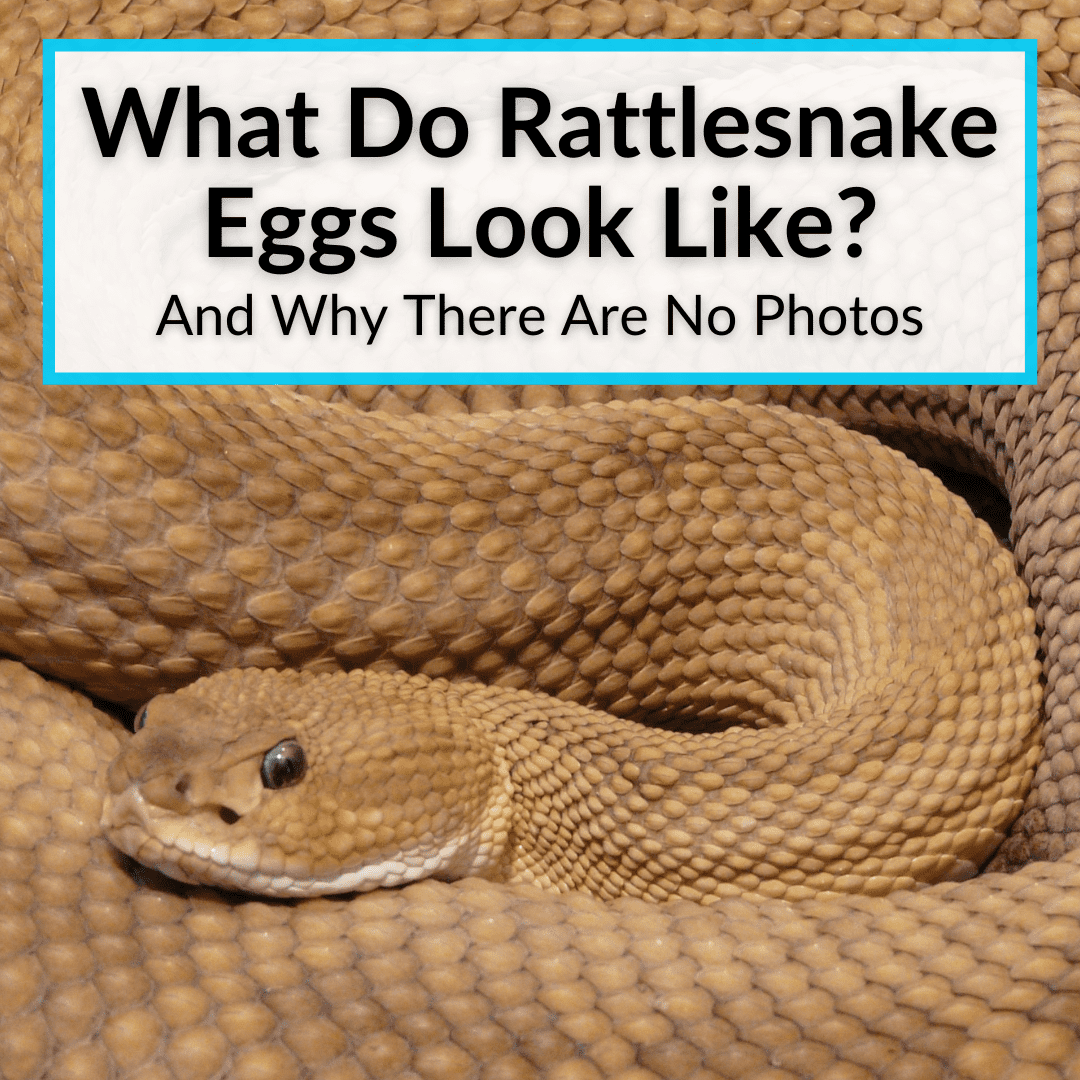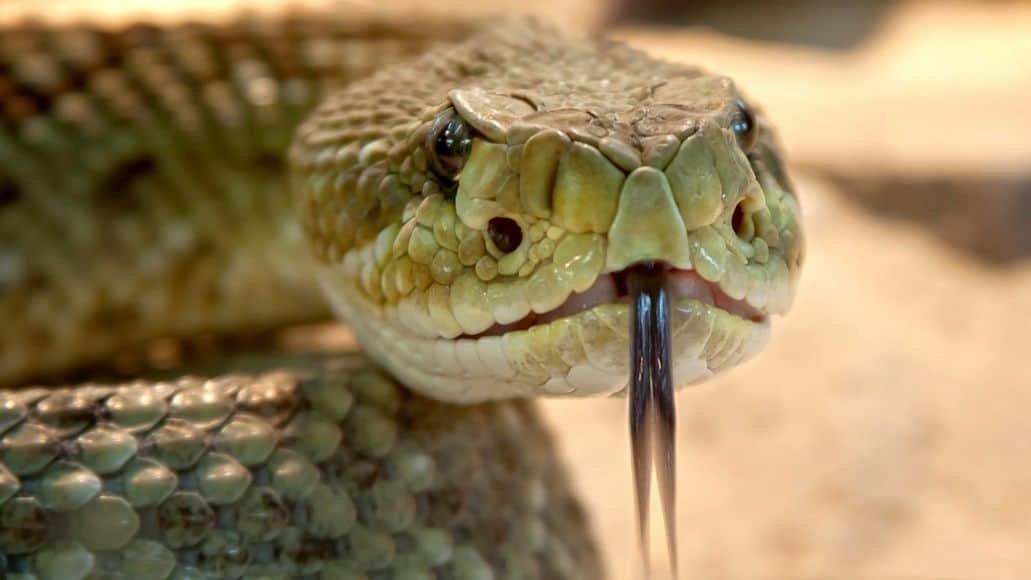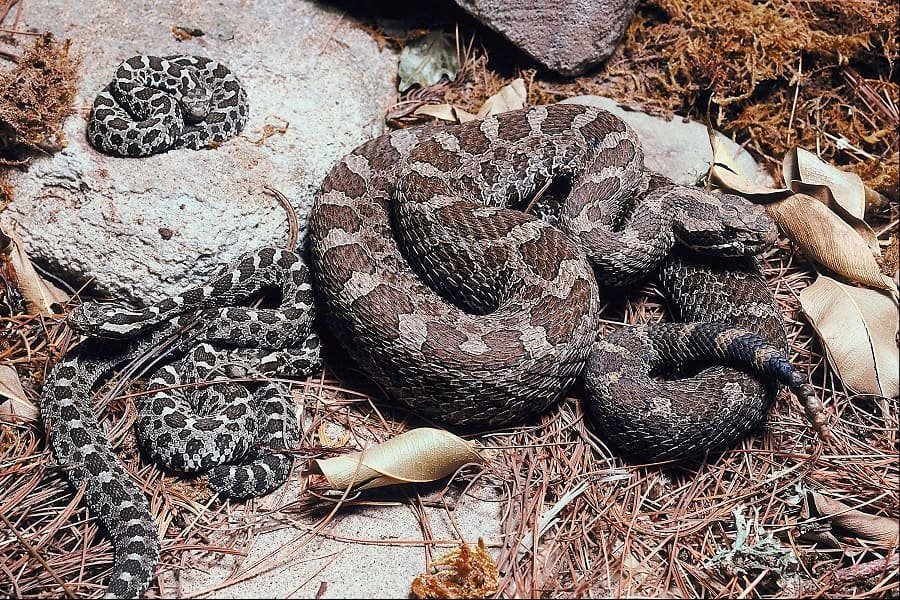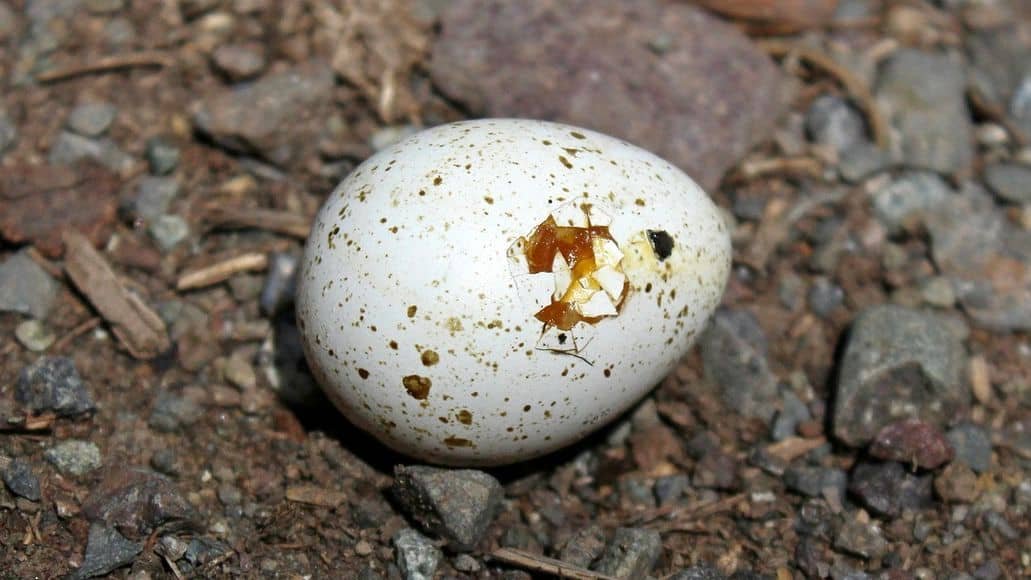
But that is terrible advice in this case.
If you’ve tried it, you already know you won’t find any.
There is a reason for that. It’s the same reason there are no photos of eggs in this article.
And it’s not that rattlesnakes don’t have eggs. They do.
But we never get to see them.
Confused? Don’t worry, we’ll explain everything. Keep reading to learn all about rattlesnake eggs and why you will never see one.
Table of Contents
What Do Rattlesnake Eggs Look Like?
We actually can’t identify what rattlesnake eggs look like, because we never get to see them. Rattlesnake eggs are different from the eggs of most other snakes, in that the snake never lays them. The eggs hatch inside the pregnant rattlesnake!
Obviously, this means the eggs never actually see the light of day. And that is why we do not know what they look like. But this whole process of hatching baby snakes inside the mother’s body is fascinating, so let’s take a closer look.
Why Rattlesnakes Do Not Lay Eggs

Rattlesnakes are ovoviviparous. This means that the females incubate their eggs inside their bodies and that the eggs then also hatch inside the female rattlesnake, once she is ready to give birth.
When she then gives birth to her young, they emerge as baby rattlesnakes. She does not lay eggs, since the have already hatched inside her.
However, the baby rattlesnakes are still encased in a thin membrane when they are born. They can easily wriggle out of this membrane, once they have emerged from their mother.
Most baby rattlesnakes are born in the early summer, regardless of when the female snake produces her eggs. Most rattlesnakes mate in the early spring.
But not all of them. If a rattlesnake does mate in the fall, the female keeps hold of the sperm until the spring, at which time she uses it to fertilize her eggs.
A rattlesnake’s gestation period usually lasts around 90 days, but it varies somewhat, depending on the breed. Most are near the 90 day mark, but some take much longer. The timber rattlesnake, for example, has a gestation period of up to five months.
Rattlesnake Babies

On average, a female rattlesnake gives birth to at least eight babies, up to around fifteen. However, that doesn’t mean all of these baby rattlesnakes will survive.
Rattlesnake mothers are not al that protective over their young. They certainly do not nurse them (obviously). The baby rattlesnakes may leave the den and try to make it on their own after just a couple of weeks.
At that point, they are still extremely small, unable to rattle their tails, they have weaker venom. As a result, a baby rattlesnake is likely to become another creature’s next meal, or to simply starve to death, because it is unable to find any food for itself.
If you find a baby rattlesnake while out and about, you should leave it alone. They may be smaller and look cuter than adults, but they can still bit.
And you do not want to be bitten by a baby rattlesnake, no matter how small. While its venom may not be as strong as a fully grown rattlesnake, which can be fatal, a bite from a baby could still put you in the hospital.
Where Am I Most Likely To Find Rattlesnakes?
You can expect to find rattlesnakes in the southwestern parts of the United States, in Central America and in South America. You’ll find them in forests, grasslands, plains or deserts. They enjoy the heat. You can also find them in swamps, because they are able to swim.
Is Snake Egg Poisonous?

Snake eggs are not poisonous and are actually quite common to eat. As long as they are cooked correctly and have not been contaminated during the cooking process, they can make a tasty snack. And do in many cultures.
You do want to make sure to clean the eggs thoroughly before you even start with any kind of cooking. You want to make sure the eggs do not have any nasty bacteria or other harmful pathogens. Otherwise, you could be in for quite a nasty shock!
Not only do they make a great snack, but snake eggs are also very nutritious. Just like with any other egg, snake eggs are high in protein. They also contain a wide range of vitamins and minerals that are beneficial to us.
I do strongly recommend you visit a butcher for your snake eggs, instead of getting them in the wild. You want to be sure they have been completely cleaned. Not to mention, it can be quite dangerous to go out and pick up snake eggs yourself. If the mothers are around, they will not take kindly to you stealing their eggs. And some species can make you pay for it.
What Rattlesnake Eggs Look Like: Final Thoughts
I honestly have no idea what an intact rattlesnake looks like. I have never seen one and neither have most people, since you would have to surgically extract them from a snake.
That’s because baby rattlesnakes hatch from their eggs while still inside their mother. They are then born alive, encased in nothing but a thin membrane.
Leave a Reply